Potrebujeme váš súhlas na využitie jednotlivých dát, aby sa vám okrem iného mohli ukazovať informácie týkajúce sa vašich záujmov. Súhlas udelíte kliknutím na tlačidlo „OK“.
ASTM E2435-05(2015)
Standard Guide for Application of Engineering Controls to Facilitate Use or Redevelopment of Chemical-Affected Properties
Automaticky preložený názov:
Štandardné Pokyny na použitie technickej kontroly , aby Uľahčenie použitia alebo prestavba chemicko - dotknutých pozemkov
NORMA vydaná dňa 1.4.2015
Informácie o norme:
Označenie normy: ASTM E2435-05(2015)
Poznámka: NEPLATNÁ
Dátum vydania normy: 1.4.2015
Kód tovaru: NS-586604
Počet strán: 34
Približná hmotnosť: 102 g (0.22 libier)
Krajina: Americká technická norma
Kategória: Technické normy ASTM
Kategórie - podobné normy:
Anotácia textu normy ASTM E2435-05(2015) :
Keywords:
activity and use limitations, Brownfields, chemical releases, corrective action, engineering controls, environment, environmental media , exposure controls, human exposure, property development, site assessment,, ICS Number Code 13.020.40 (Pollution, pollution control and conservation)
Doplňujúce informácie
| Significance and Use | ||||||||||||||||
|
4.1 Intended Application of Guide—This guide is intended for use at properties that are presently developed or proposed for development for residential, commercial, or industrial purposes but which contain chemical-affected soil, groundwater, air, or other environmental media, which may pose an unacceptable risk to human health. This guide can be used as a tool for planning and implementation of property reuse or redevelopment activities at former commercial/industrial facilities, “brownfield” properties, or properties containing naturally occurring, chemical-affected environmental media so as to effectively manage potential human exposures to COCs which might otherwise limit productive use of the property. 4.2 Situations Where This Guide May Be Applied—An engineering control may be needed as part of the development plan when: (1) COCs are present in soil, groundwater, or other environmental media at concentrations posing unacceptable risk(s) to human health per applicable regulatory criteria or a risk-based evaluation; (2) a potentially complete exposure pathway for COCs is likely to exist in the absence of an engineering control or other response measure, and (3) installation and maintenance of the engineering control is determined to be an applicable and cost-effective response action relative to other options. A property should not be excluded from development or redevelopment solely on the basis of chemical-affected media, in general, and chemical-affected groundwater, in particular. If no affected environmental media are identified as having COC concentrations in excess of applicable regulatory standards or risk-based criteria, then engineering controls or other response measures are not required. 4.3 Assumptions for Use of This Guide—For use of this guide, it is assumed that (1) an environmental site assessment has been completed to characterize chemical-affected environmental media, (4.4 Presumptive Use of Engineering Controls—The design basis for any engineering controls installed depends on the risk to be controlled, nevertheless, if no known risk has been identified, the guide may be implemented at the discretion of the site developer. As a conservative measure to reduce or eliminate potential unidentified exposures (e.g., migration of COCs from adjacent properties with known chemical-affected environmental media), the site developer may choose to install engineering controls in the absence of a detailed site characterization and associated risk-based corrective action analysis. Regardless, the site must be sufficiently characterized as to the types and concentrations of the COCs present in order to design and install engineering controls that will effectively mitigate the potentially complete exposure pathway(s) identified for the site. Upon change in land use, the potential for unacceptable risk should be evaluated and the engineering control modified, if so indicated by the results of the evaluation. 4.5 Expected Qualifications for Persons Applying This Guide—Persons applying this guide are expected to be sufficiently knowledgeable in various disciplines, including but not limited to environmental science, property development requirements, or engineering applications, or combination thereof. Such knowledge is required in order to (1) interpret the results of environmental site assessments and risk-based corrective action analyses and (4.6 Intended Compatibility with Other ASTM Guides—This guide is intended to be compatible with other ASTM guides related to the investigation and characterization of chemical-affected property and the management of associated human health risks. This guide is consistent with the practices set forth in these other guides but provides a more focused evaluation on engineering controls as measures to manage risk specifically associated with property development activities. 4.7 Limitations on Use of This Guide—This guide provides a general overview of the procedures for evaluation and selection of engineering controls for use in property development or reuse, but does not address the detailed design, installation, operation, or maintenance of these engineering controls. The user is referred to other, more detailed technical design guidelines for proper implementation of such controls on a site-specific basis. 4.8 Situations Not Addressed—This guide does not address other environmental issues or concerns that are not directly related to property development or reuse but which may be required under applicable laws or regulations. Such uses may include groundwater protection, surface water protection, or ecological concerns. 4.9 Costs Associated with Engineering Controls—The costs for engineering control systems will depend on numerous site specific factors (e.g., area and volume of chemical-affected environmental media, COCs, unacceptable risks to be reduced or eliminated). An exhaustive comparison of costs associated with various engineering control systems is beyond the scope of this guide; however, in order to illustrate the potential cost impact of site development using engineering controls, a case study example is presented in Appendix X4. |
||||||||||||||||
| 1. Scope | ||||||||||||||||
|
1.1 This guide presents general considerations for application of engineering controls to facilitate continued use or redevelopment of properties containing chemical-affected soil, groundwater, or other environmental media, due either to chemical releases or naturally-occurring conditions. This guide is not meant to be prescriptive but rather to present considerations for evaluating technologies capable of addressing potential human exposures associated with chemical-affected environmental media. 1.2 Table 1 lists the considerations that should be taken into account when developing an engineering control in accordance with this guide. 1.3 This guide is intended for use by
real estate developers, civil/structural designers, environmental
regulators, industrial parties, environmental consultants, and
other persons concerned with residential, commercial, or industrial
development of real properties where chemical-affected
environmental media are present. The design process should involve
the individuals and firms working on various aspects of the
specifications for construction, operation, and maintenance. If the
site is located on public property, then public participation
should be considered during the design process.
1.4 This guide is directed toward properties where chemical-affected environmental media, associated with either human-influenced activities or naturally-occurring conditions, will remain in place and where active or passive engineering controls will be used to reduce or eliminate exposures that may otherwise pose an unacceptable risk to property users. 1.5 This guide identifies the exposure concerns associated with chemical-affected properties that may affect the property development plan, both in the construction phase and during the proposed use of the property; defines performance standards for control of applicable exposure pathways; and, for each exposure pathway, provides examples of engineering controls that may be applied for new or existing construction. 1.6 This guide will assist in identification of the optimal property development plan for a property with chemical-affected environmental media. Such a plan will address both short-term construction issues and long-term exposures of property users. 1.7 This guide does not address the broader range of environmental concerns that are not directly affected by construction measures and engineering controls (e.g., protection of water resources or ecological receptors). 1.8 Detailed specifications for site-specific application of engineering controls are not addressed in this guide. The user is referred to other related ASTM standards and technical guidelines regarding the implementation of the site evaluation and corrective action process, as well as the detailed design, installation, operation, and maintenance of these engineering controls. 1.9 The overall strategy for addressing unacceptable risks may employ either remedial actions or activity and use limitations, or both. Engineering controls are a subset of remedial actions given that (1) remedial actions involve cutting off the exposure pathway or reducing the concentration of COCs, or both and (1.10 The values stated in SI units are to be regarded as standard. No other units of measurement are included in this standard. 1.11 This standard does not purport to address all of the safety concerns, if any, associated with its use. It is the responsibility of the user of this standard to establish appropriate safety and health practices and to determine the applicability of regulatory limitations prior to use. |
||||||||||||||||
| 2. Referenced Documents | ||||||||||||||||
|
Podobné normy:
Historická
1.3.2009
Historická
1.1.2014
Historická
1.12.2014
Historická
1.11.2010
Historická
15.5.2011
Historická
1.12.2012


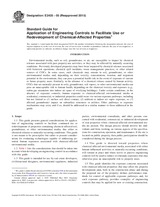
 ASTM E2205/E2205M-02..
ASTM E2205/E2205M-02..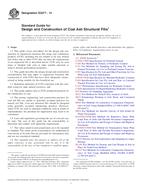 ASTM E2277-14
ASTM E2277-14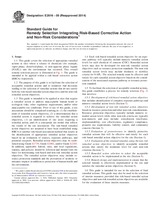 ASTM E2616-09(2014)..
ASTM E2616-09(2014)..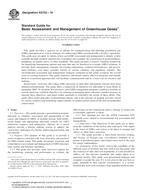 ASTM E2725-10
ASTM E2725-10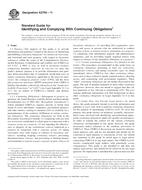 ASTM E2790-11
ASTM E2790-11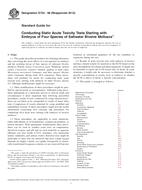 ASTM E724-98(2012)..
ASTM E724-98(2012)..
 Cookies
Cookies
